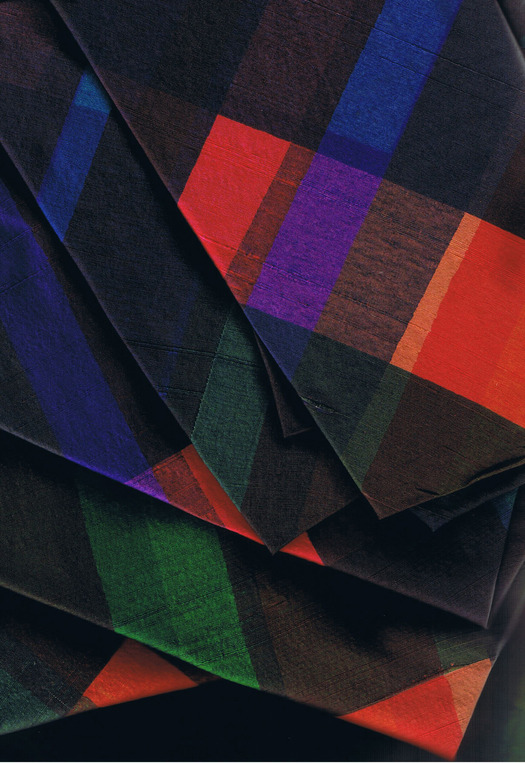
Custom fabric with strié. Designed by D.D. and Leslie Tillett (All images courtesy Tillett and Rauscher Inc.)
I was late to visit “The World of D.D. and Leslie Tillett” at the Museum of the City of New York, but as luck would have it this small, gorgeous exhibit has been extended through February 3. If you are interested in textile design, mid-century style, or creative partnerships, I would urge you to go.
If you have been reading this blog you know I am obsessed with all three, so I was surprised I had never heard of the Tilletts before. The biographies of the Tilletts (she is D.D., he is Leslie) read like an amalgamated version of my research into other 1950s life/work partnerships: a dollop of Alexander Girard’s sure hand with color, a sprinkling of the Jacqueline Kennedy pixie dust that worked for Design Research, more than a little of the Eames gift for self-promotion. She was working for Harper’s Bazaar as Doris Doctorow when, on a shoot in Mexico, she met Leslie, already a textile designer. They married and moved to a former carriage house on East 80th Street, with a retail shop on the ground floor, workshop above, and home up top, all strikingly documented by photographer Samuel Gottscho. Like so many of the design couples we know better – the Thompsons, the Rapsons, the Weeses – they were living the lifestyle they designed and promoted, so their house, their shop, their relationship becomes part of the package. It is not every couple that has their portrait taken by Irving Penn. (Additional Instagram images I took of the installation are here, here and here. More exhibit photos at Femme et Fleur.)
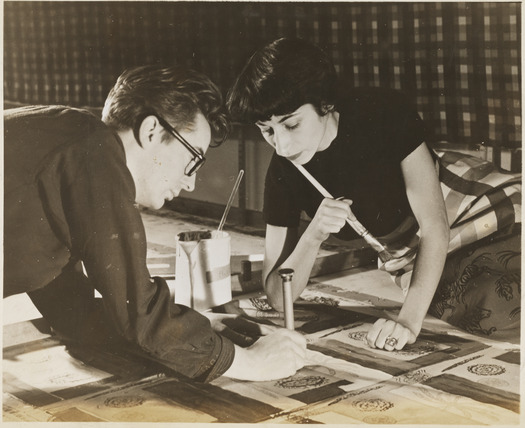
Leslie and D.D. Tillett, ca. 1947
Leslie’s designs were often inspired by nature, and the exhibition includes a number of his expressive drawings and sketches, as well as illustrated books. D.D. also drew, and their popular abstract chrysanthemum pattern, which covers one wall of the museum, is from her paintings. (The exhibition was curated by Donald Albrecht, Phyllis Magidson, and Phyllis Ross.) Their fabrics were used in the living quarters of the Kennedy White House, as well as for dresses worn by Jackie of the same simple, cotton, graphic quality as her more famous Marimekkos. The exhibit includes a note from Jackie after Caroline Kennedy’s wedding, where Tillett fabrics were used for all the tables to give it proper Cape Cod flair.
D.D. also sewed her own clothes, and one side of the gallery is taken up with a display of her own wardrobe, all of which uses swaths of patterned fabric in striking, hard-to-date ways. Because of the flowers, the fish, the plaids, the fabrics are closer to classic upholstery than those of Girard and Maija Isola, and worked within the updated traditional style of decorators like Parish-Hadley. The patterns read as more avant-garde on the many, many fashion products that used Tillett textiles, from a necktie subscription service to fabulous 1950s bathing suits. The Tilletts designed for both men and women, or rather, their graphic prints could go either way.
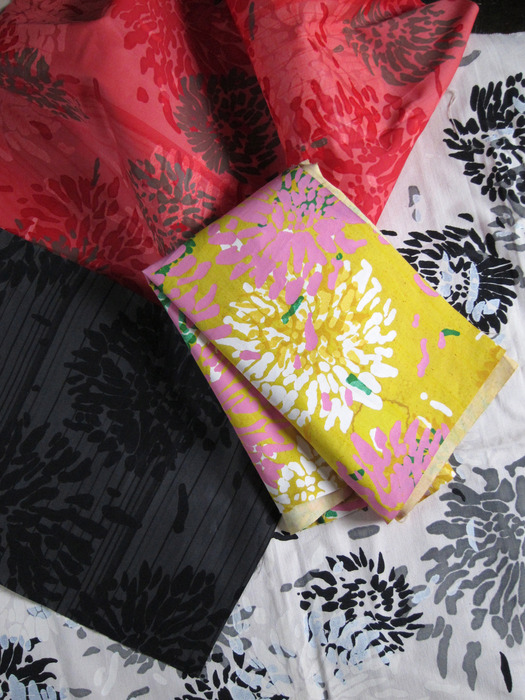
Custom fabrics with chrysanthemum pattern and strié. Designed by D.D. and Leslie Tillett
A fascinating side project: in 1969 Jackie Kennedy recruited the Tilletts to launch Design Works, a textile studio in Bedford Stuyvesant for which the Tilletts trained local residents in their techniques and collaborated on designs. Design Works was known for large-scale, ethically-inspired patterns and lasted until 1978. The exhibition includes a sample of a photorealistic fabric made by Design Works and based on an African mask at the Brooklyn Museum, that reminds me of Herzog and de Meuron's Ricola factory exterior. As a community development idea, this still appeals.
As a holiday note, the museum shop is carrying a selection of merchandise made from the Tilletts’ own fabrics, manufactured by the Nantucket mills that created the originals. I was particularly taken with a large watercolor-tartan pouf. Less pricey fabric-covered journals and spools of Tillett-designed ribbon are also for sale.
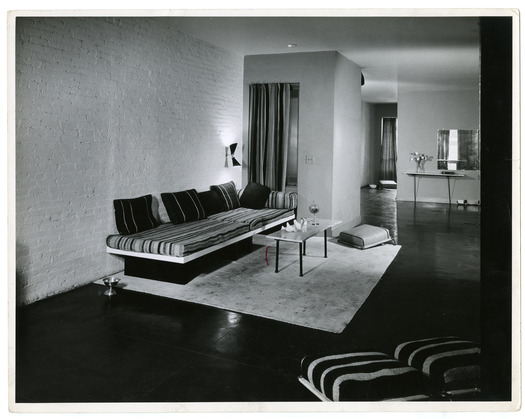
Living room of the Tillett home and workshop, 170 East 80th Street, New York City, 1951. Photograph by Samuel H. Gottscho
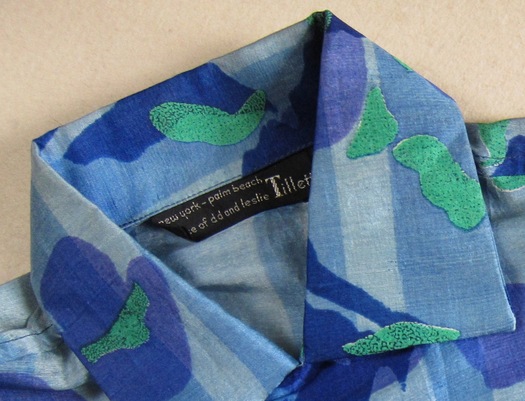
The house's label in the 1940s and 1950s (for my #thriftbreak followers)
